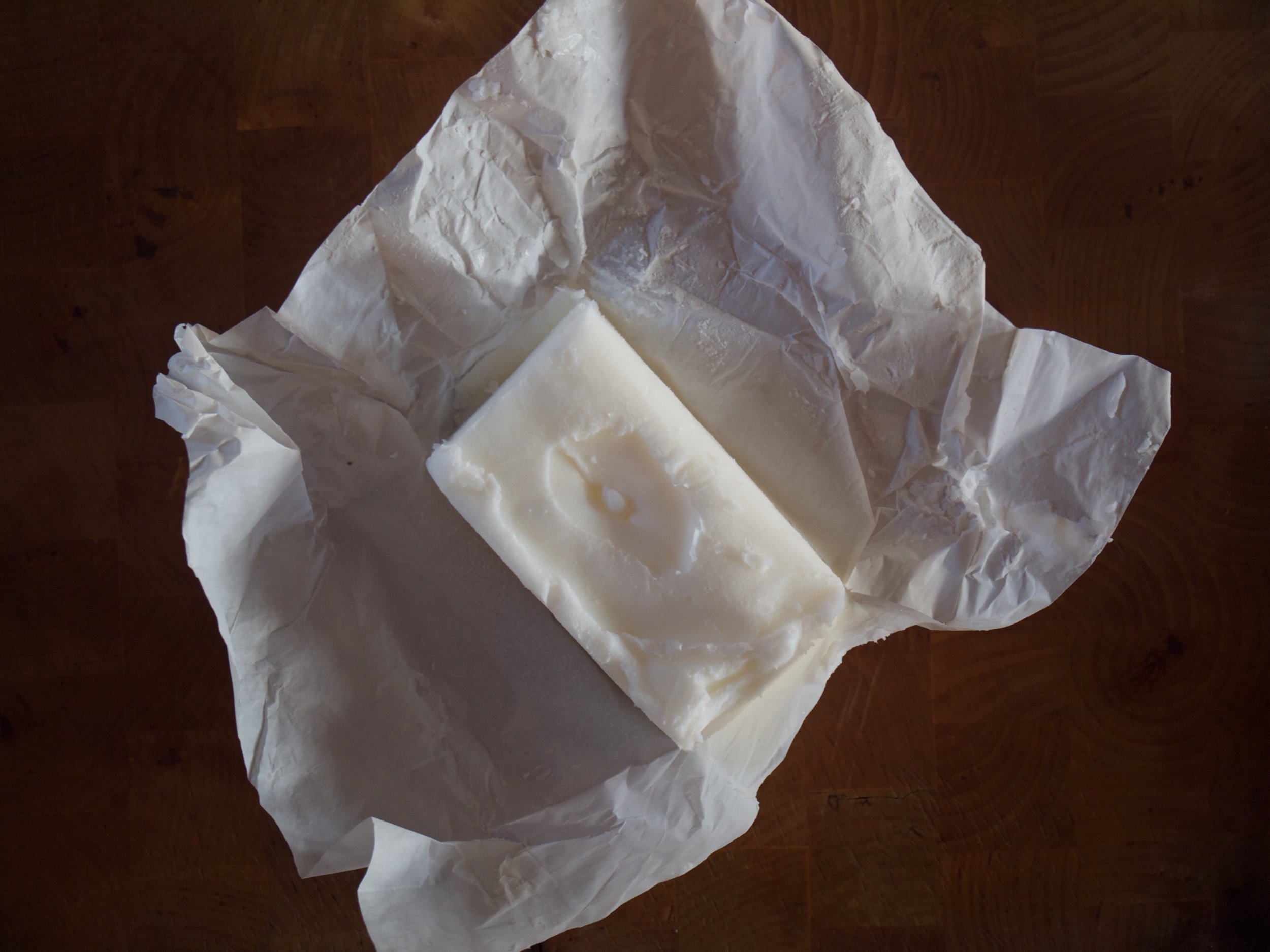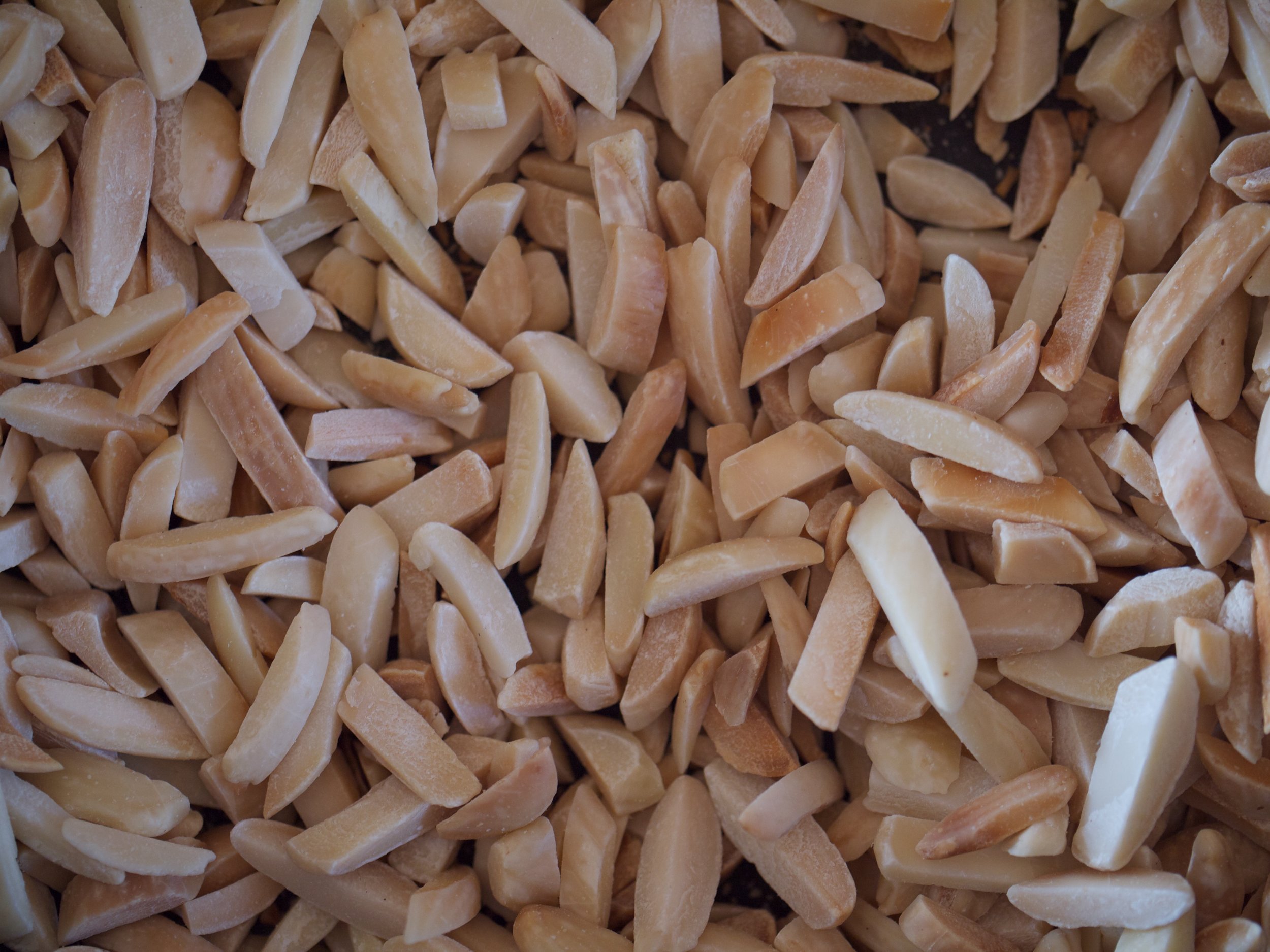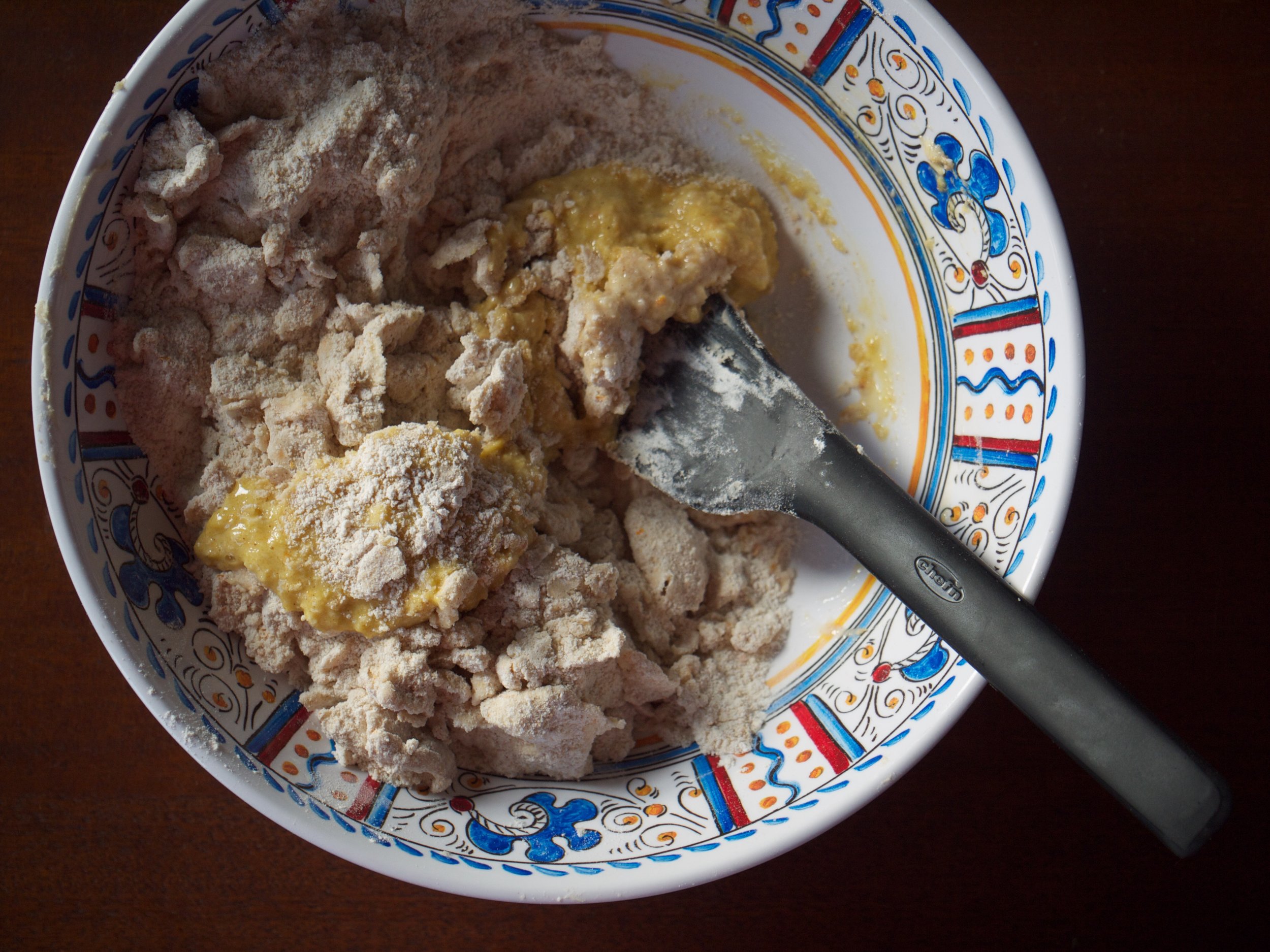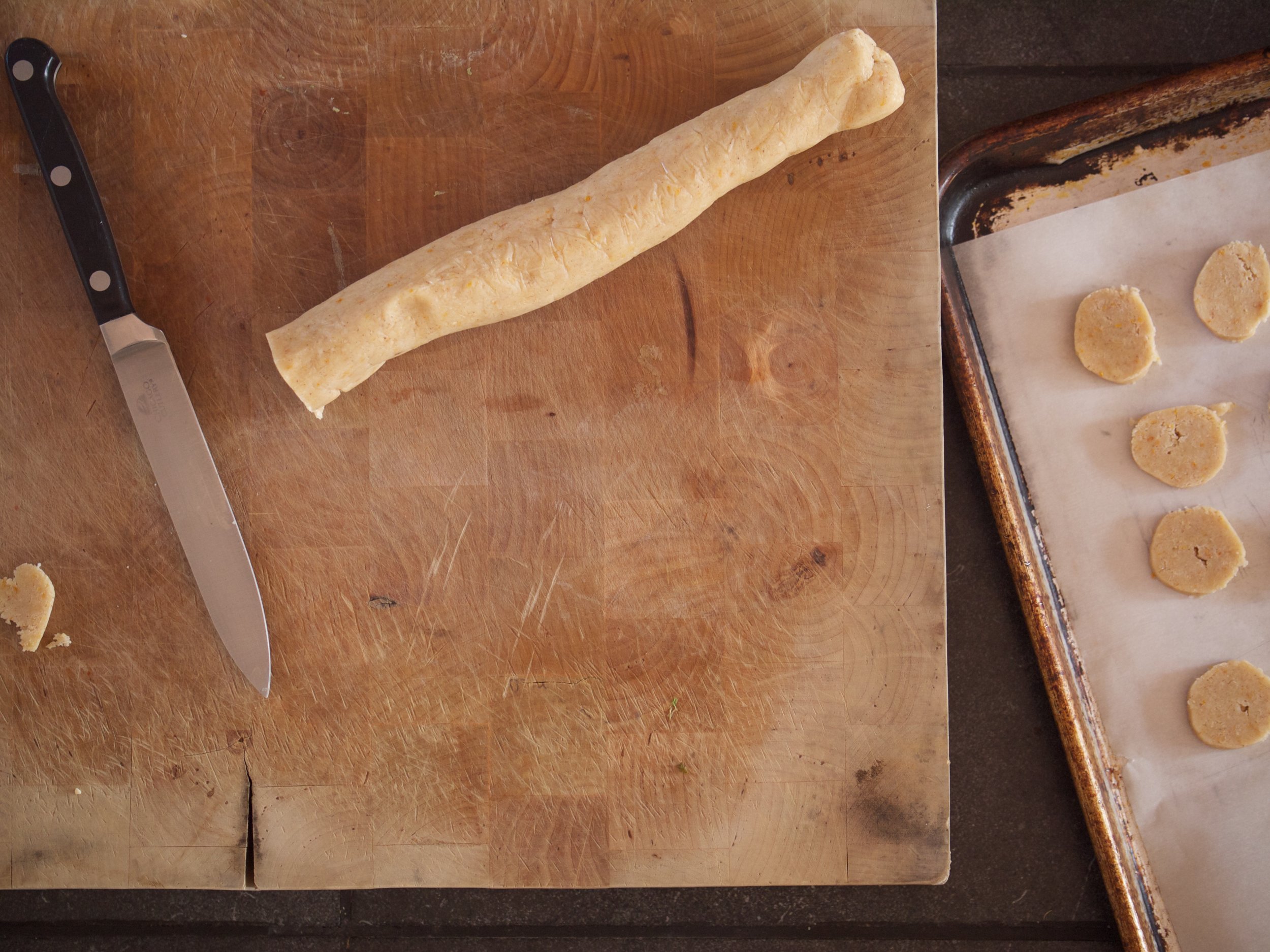Like many others, I grew up reading Laura Ingalls Wilder’s books: Little House in the Big Woods, Little House on the Prairie, et al.* As befits a book about 19th century American homesteaders, food preparation featured prominently, which was a draw to this weirdo: at age 8, I loved nothing more than to read about smoking venison in a carved-out log, or churning butter, then tinting it with grated carrot and packing it into a mold. One of the more memorable scenes was hog killing, an infrequent event, when Laura and Mary played with a “balloon” made of the pig’s bladder and one very lucky girl got to nibble on a roasted pig’s tail. The descriptions of everyday life were full of detail about how everything got used—there was no specific pride in this, just the reality of life then, and making every bit count.
This sort of prairie resourcefulness resonated with me, even as a kid born and raised in Brooklyn. My mom’s mother grew up in Nebraska, and had a certain Midwestern practicality. My mom’s childhood was spent outside Boston, where “thrifty Yankee” is an actual term, much to my delight. My mom is the master of making something excellent out of nothing. (A piano student once gave her a scrap of furniture upholstery fabric and she constructed a pretty dashing winter coat from it. This sort of thing happens all the time.) I certainly got my obsession with using things up from this side of the family.
There are some ingredients in the kitchen that harken back to times when using things up was just the norm. Lard is one. While it’s commonplace in plenty of the world, and certain parts of this country, and even in the occasional food magazine toting it as the next big thing, no one I know actually uses it except my mom, my friend Melinda, and myself. And that’s a shame—it’s a versatile ingredient that has different qualities than other fats.
Despite coming from a pig, it does not tasty overly porky or meaty, so it works for both sweet and savory applications. It makes a delicious piecrust, of course, cut with butter or solo. Homemade flour tortillas are worthwhile, delicious, and surprisingly easy—plus kneading them with your hands makes your skin incredibly soft (!). With a higher smokepoint than butter, it’s great for frying of course, or sautéing. I even like to grease my cast iron with it when making cornbread. And while the stuff you get in supermarkets is certainly processed, at least it’s something that people have been using in cooking since way before the Ingalls family—unlike margarine, shortening, and other spooky mystery fats.
Which brings me to my most loved lard application: cookies. Orange- and cinnamon-scented and full of toasted almonds, these are my mom’s invention, nutty and aromatic. And easy to make too: You dump the ingredients in the food processor, roll into a log, then slice and bake from the fridge or freezer. Because of the lard, they taste more multi-dimensional than a typical slice and bake cookie that uses only butter; these use equal parts of both. And most importantly, the lard (and some cornstarch) gives these cookies a truly special texture: delicately snappy and crumbly, with a sweet crunch from the sugar on top. They are delicious with a mug of milky Earl Grey on a grey, freezing afternoon. It doesn’t get much better: sitting around with my mom, in slippers, nibbling on a few of these while chatting about who knows what—for those times, I’m very thankful.
Gretchen's Spanish-Style Butter and Lard Cookies
These cookies are not fussy at all, but in case you don’t read the whole recipe through carefully before you embark on it: You need a food processor, cold butter and lard, decorator or demerrara sugar, and parchment paper. And you will need to toast the almonds. Also, don’t plan on eating these right away: you’ll silently curse me for telling you to bake a quasi-tasteless cookie, somehow neither sweet nor salty enough. The trick is to wait to eat them for at least a couple of days—both the texture and taste develop in this time, sitting in a tin. This “curing” process happens to coincide with most mailing times, if you are a holiday cookie sender.
Put 2 1/4 cups flour, 1 cup toasted slivered almonds, 3/4 cup sugar, 1/4 cup cornstarch, 1 teaspoon cinnamon, 1/2 teaspoon of salt, and the grated rind from one orange into a food processor. Process until the nuts are pretty fine. Add 1/2 cup each cold lard and cold butter, cut into pieces, and process until mealy. Dump into a bowl and add one beaten egg. Mix by hand until dough comes together (you might need to add a bit of cold water). Form into cylinders and wrap in plastic wrap (I like making them into thin cylinders and slicing into coins, but normal cookie sized logs are great too). Chill until very firm or freeze for later use.
Preheat oven to 325°F. Slice the logs into cookies about 1/4-inch thick. Put on parchment covered cookie sheets. Sprinkle with decorator sugar crystals (demarrara will work in a pinch—use more than you might think) and press sugar into cookies with the heel of your hand or your fingers. Cook until thoroughly golden brown, between 9 and 15 minutes. Do not undercook, but watch them so they don't burn. Remove them from the oven and the pan to let cool completely; store in a closed tin. Fine to eat immediately, but great if allowed to age for a few days.
Favorite other use for lard:
- Homemade flour tortillas. Sounds like a pain, but isn’t. They are 1,000 times better than anything you can get in a bag or store, and even a restaurant, and so dang easy. Google a recipe (it’s a simple ratio) and get to it. Plus, as I said before, soft hands. Also, I imagine you could make a huge batch of them and freeze them.
* I’d really recommend the newest biography of Laura Ingalls Wilder, out this month, called Prairie Fires. Quite simply, it changed everything I thought I knew about her and the turn of the century. Truly informative and food for thought!






